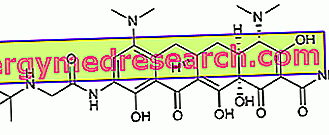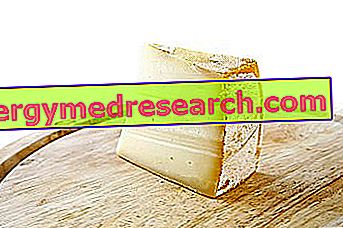Linseed oil is a seed oil used in human nutrition mainly due to its content in essential fatty acids (AGE / PUFA).
Nutritional values
| Energy and macronutrients per 100g of edible portion | |
| Power | 899kcal |
| proteins | 00, 0g |
| Lipids | 99, 9g |
| Saturated | 09, 9-05, 0g |
| unsaturated | 90, 0-94, 9g |
| Monounsaturated | 09, 9-18, 0g |
| polyunsaturated | 66, 0g |
| carbohydrates | 00, 0g |
| Vitamins | |
| Tocopherols (vit. E) | ± 15-17mg |
What is linseed oil?
Linen is a plant belonging to the family of Linaceae native to the Middle East, that is the current Iran, Iraq, Syria, etc. There are more than 200 different varieties, but the one cultivated for industrial purposes is the Linum usitatissimum L., which differs further in two types:
- Oil flax: with a low and more rigid plant, it has large and brown seeds (from which oil is extracted), and prefers warm and sunny climates.
- Linen fiber: with a high plant and an elastic stem, it has small seeds and prefers mild, ventilated and without thermal changes

Extraction method
Linseed oil is produced through some passages; the first is the squeezing, a process that allows the extraction of the lipid fraction together with the aqueous one. The most suitable method is the cold one, which means that it does not cause a thermal rise above 27-30 ° C; the highest quality of this technique compared to the others consists in maintaining the nutritional properties of linseed oil (integrity of the content in essential fatty acids). Subsequently various filtering methods are used, useful for the separation of the undesired components from the finished product.
There is a non-edible form of cooked linseed oil used in the paint industry.
NB . Until the first half of the twentieth century, flax seeds required a mild roasting, as they are coated with a mucilage that hinders crushing; to date this process SHOULD NOT be used anymore ... as clay filtration should be obsolete. However, when buying linseed oil, it is always advisable to examine the origin and the production method.
Warnings for use
Linseed oil MUST be a high quality product and MUST be used raw on food. Linseed oil contains essential fatty acids (AGE / PUFA) and tocopherols (vit. E), essential lipophilic components useful for maintaining cellular functions.
Vitamin E is a powerful antioxidant, while AGEs are coagulants and anti-coagulants, blood pressure regulators, triglyceridemia regulators, cholesterolemia regulators, components of cell membranes, etc. However, their molecular integrity in linseed oil is subject to easy deterioration; this depends above all on their TERMOLABILITY (sensitivity to heat) and, despite the presence of vit. And, from their sensitivity to oxidation and rancidity. It follows that linseed oil, besides not being suitable for cooking and preparing itself for seasoning meats and vegetables, does NOT represent a valid alternative to olive oil for storing food in jars ... on the contrary ! Linseed oil requires good preservation.
Linseed oil should be kept in:
- Containers of dark glass, not plastic, possibly metal (in order to prevent the passing of light rays)
- Airtight containers (in order to prevent the passage of air and oxygen inside them)
- Small containers (in order to consume them in a short time reducing their exposure to oxygen)
- Environments that are thermally controlled and NOT hot (in order to slow down the heat induced rancidity processes)
NB. linseed oil is also a food supplement (a perfect example of functional food); if you choose to consume it to help achieve the daily quota of omega3, you should take it in the same portions as any seasoning oil. THERE ARE NO CONTRAINDICATIONS, indeed! Its omega3 content is significantly higher than that of omega6 contributing to the improvement of the ratio between the two essential fatty acids which, from a health point of view, should favor the former over the latter.
Omega3 ratio: 1: 3 recommended omega6 - Omega3 ratio: omega6 linseed oil 1: 0.24



